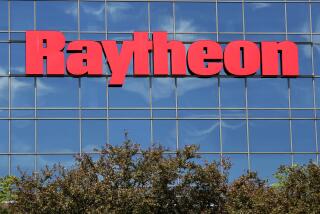Texas Construction Firm to Pay $750 Million : Suit Over Nuclear Project Settled
- Share via
HOUSTON — Brown & Root announced Thursday that it agreed to pay three utilities and the city of Austin $750 million--reportedly the largest cash legal settlement in U.S. history--to settle a suit over construction of the South Texas Nuclear Project.
Officials hailed the settlement as a move to make the project, now projected to cost five times its original estimate, finally viable for electric-utility ratepayers.
The utilities and Austin, which operates that city’s electrical service, charged in a $6.3-billion breach-of-contract suit that construction of the plant was mishandled by Brown & Root.
The owners fired Brown & Root, which had had no experience as a nuclear contractor when the project began, as design engineer at the project in 1981; the company then resigned as construction contractor.
Under the agreement, Brown & Root, a Houston-based construction company and subsidiary of Dallas-based Halliburton, will pay $630 million to Houston Lighting & Power, San Antonio City Public Service and Central Power & Light of Corpus Christi.
The city of Austin, the fourth owner in the project, has not decide yet whether it will accept its $120-million share of the settlement. If it rejects its $120 million, Halliburton said it intended to “defend the litigation vigorously.”
The settlement was announced at simultaneous news conferences in Houston, Dallas, San Antonio and Corpus Christi.
“Although Brown & Root continues to deny any liability arising from its work at STP, we believe this settlement to be in the best interests of the company,” Brown & Root president T. Louis Rustin said. “We can now focus our energy on working for our customers rather than the lawyers.”
Ferd Meyer, an attorney for CPS, said his research shows the agreement is the largest cash settlement in U.S. history.
“There’s no other cash settlement that even approximates this,” said Meyer.
The money will be paid in proportion to each partner’s share in the nuclear project near Bay City. San Antonio is a 28% owner, HL&P; is a 30.8% owner and CP&L; owns 25.2%.
Under the agreement HL&P; would get $231 million, San Antonio $210 million, CP&L; $189 million and Austin $120 million.
Quarterly Payments
The settlement, which will require approval of a court and the Public Utility Commission to become final, calls for Brown & Root to pay the project owners $750 million in quarterly payments over the next seven years starting Oct. 1.
STNP’s final cost is now estimated at $5.5 billion, about 500% more than the original estimate. The first unit of the plant in Matagorda County, 12 miles from Bay City, is scheduled to be ready for operation in mid-1987 and the second unit two years later.
Brown & Root was replaced on the project by Bechtel Corp.
HL&P; Chairman Don D. Jordan said the settlement puts the cost of the project “at a comparative cost with other units in the country.”
Austin Mayor Frank Cooksey said the city has “plenty of time” to decide whether to accept its share of the offer.
“We have a couple of bargaining chips and will be developing counterproposals,” Cooksey said.
In Austin, Gov. Mark White said he was pleased to see an end to the case, which attorneys said already involved some 30 million documents and cost the litigants legal fees of more than $100 million.
“Continuation of the lawsuit would have meant the spending of great sums on litigation with little likelihood of settlement for years to come and no assurance of greater recovery,” White said.
“I am encouraged that the overall price reduction and resulting lower cost per kilowatt of the plant will render it a viable investment for the ratepayers of Texas,” he said.
Despite the payment, the financial condition of both Halliburton and Brown & Root will remain strong, said Thomas H. Cruikshank, president and chief executive of Halliburton.
“Brown & Root entered into the contract in 1972 prior to Three Mile Island and the onset of the problems which have caused multiplication of the costs of, and dramatic extensions of the construction periods for, every nuclear plant of the South Texas Project generation,” he said in a statement.
More to Read
Sign up for Essential California
The most important California stories and recommendations in your inbox every morning.
You may occasionally receive promotional content from the Los Angeles Times.













